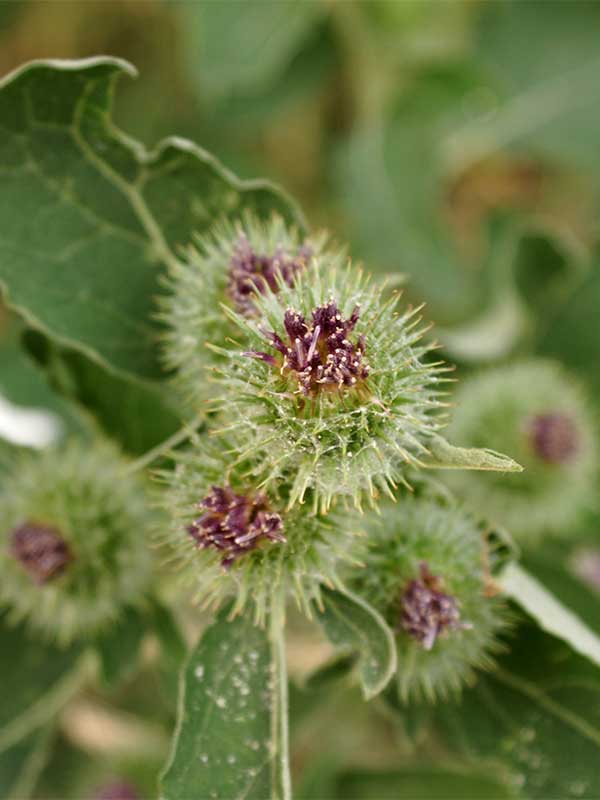Arctium minus / lesser burdock
- purple to pink to lavender thistle-like flowers with hooked bracts
- nasty hooked seed heads
- very large, heart-shaped leaves
- found in a wide variety of disturbed areas
Also known as: little burdock, louse-bur, common burdock, button-bur, cuckoo-button, wild rhubarb, bardane
Lesser burdock is an introduced, biennial, highly invasive, nasty weed. The purple flowers can be mistaken for thistles, but the very large, lower basal leaves – heart shaped with wavy margins – dispel any doubt.
In the first year, all that grows is a dense rosette of leaves at ground level. And a massive tap root.
The second year, it bolts to perhaps 6 feet and gets very large leaves. Then it flowers, producing pink to purple thistle-like heads (a bit under 1 inch across) on branched stems. The outer bracts of the flower heads end in hooks, reputed to be the inspiration for Velcro. So if that suggest to you that they might be hard to dislodge from clothing etc., you’re quite right. Especially when the seed heads are dry. The fruits themselves are achenes, also with sharp and very small bristles (pappas hairs) that can easily blow away. Of course, if they get stuck in your skin somehow, they are like the glochids on cacti.
Lesser burdock entered the country/continent accidentally. It is now found aggressively invading disturbed areas, vacant lots, parks, roadsides, prairies, fields and pastures… basically anyplace unattended and disturbed. Fortunately, this (probably) does not include your child’s bedroom. Once established, you’ll probably be trying to kill it for years.. Eradication is difficult because of the deep tap roots and large seed production… with a long persistence in the seed bank.
The plant flowers from July through the end of summer.
Finally, the leaf stalks, flower stalks and first year roots are edible. Ask your mom or some other authority for more info before doing so.
| Color | |
|---|---|
| Family | |
| Blossom size | |
| Inflorescence size | |
| Inflorescence type | |
| When? | |
| Where? |



